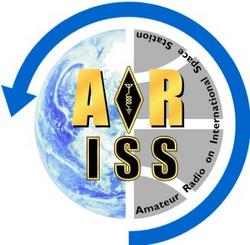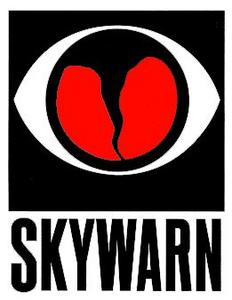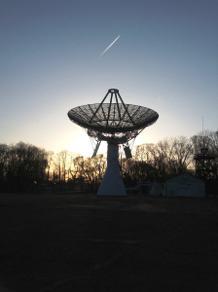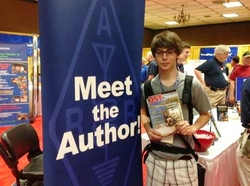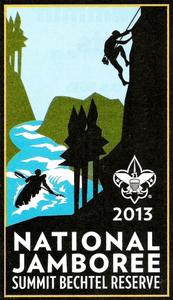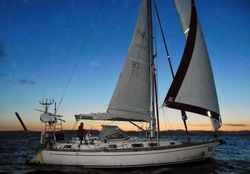 July 18, 2013 John E. Ross, KD8IDJ, Editor
| ||||||||||
Propagation Science: HAARP Facility Shuts Down The High Frequency Active Auroral Research Program (HAARP) -- a subject of fascination for many hams and the target of conspiracy theorists and anti-government activists -- has closed down. HAARP's program manager, Dr James Keeney at Kirtland Air Force Base in New Mexico, told ARRL that the sprawling 35-acre ionospheric research facility in remote Gakona, Alaska, has been shuttered since early May. "It comes down to money," Keeney said. "We don't have any." Keeney said no one is on site, access roads are blocked, buildings are chained and the power turned off. HAARP's website through the University of Alaska no longer is available; Keeney said the program can't afford to pay for the service. "Everything is in secure mode," he said, adding that it will stay that way at least for another 4 to 6 weeks. HAARP put the world on notice two years ago that it would be shutting down and did not submit a budget request for FY 15, Keeney said, "but no one paid any attention." Now, he says, they're complaining. Keeney says he's already had inquiries from Congress, and universities that depended upon HAARP research grants also are upset. The only bright spot on HAARP's horizon right now is that the Defense Advanced Research Projects Agency (DARPA) is expected on site as a client to finish up some research this fall and winter. The proximate cause of HAARP's early May shutdown was less fiscal than environmental, Keeney said. As he explained it, the diesel generators on site no longer pass Clean Air Act muster. Repairing them to meet EPA standards will run $800,000. Jointly funded by the US Air Force Research Laboratory and the US Naval Research Laboratory, HAARP is best known for its 3.6 MW HF (approximately 3 to 10 MHz) ionospheric research instrument (IRI), feeding an extensive system of 180 antenna elements and used to "excite" sections of the ionosphere. Other onsite equipment is used to evaluate the effects. Larry Ledlow, N1TX, of Fairbanks, Alaska, said HAARP ionosonde and riometer data have been "invaluable, especially being more or less local, to understand current conditions in the high latitudes." He said data from other sites "simply do not accurately reflect the unique propagation we endure here." To fill the gap, Ledlow said, several members of the Arctic Amateur Radio Club -- including Eric Nichols, KL7AJ, author of Radio Science for the Radio Amateur and articles in QST -- have discussed building their own instruments. "It's all very preliminary," he said, "but we really feel the pinch losing HAARP." Nichols, of North Pole, Alaska, has conducted experiments at HAARP. He called the shutdown "a great loss to interior Alaska hams and many others."
The ultra-high power facility long has intrigued hams, even outside of Alaska. In 1997, HAARP transmitted test signals on HF (3.4 MHz and 6.99 MHz) and solicited reports from hams and short-wave listeners in the "Lower 48" to determine how well the HAARP transmissions could be heard to the south. In 2007 HAARP succeeded in bouncing a 40 meter signal off the moon. Earlier this year, HAARP scientists successfully produced a sustained high-density plasma cloud in Earth's upper atmosphere. As things stand, the Air Force has possession for now, but if no other agency steps forward to take over HAARP, the unique facility will be dismantled, Keeney said. Splashy web postings abound, blaming HAARP for controlling the weather -- most recently in the case of Hurricane Sandy and the spate of tornados -- and for causing other natural disasters. Quipped Keeney, "If I actually could affect the weather, I'd keep it open." Ham Radio in Space: ISS Crew Member Chats with Scouts in Canada via Ham Radio
European Space Agency Astronaut Luca Parmitano, KF5KDP, aboard the International Space Station spoke July 8 via ham radio and a terrestrial telecommunication link with Scouts attending the Canadian Scout Jamboree 2013 in Sylvan Lake, Alberta. Amateur Radio on the International Space Station (ARISS) arranged the event. Using the ISS call sign NA1SS, Parmitano contacted telebridge station VK5ZAI in Australia, on 2 meter FM. Audio from the VK5ZAI was relayed to Canada. The contact lasted about nine and a half minutes. The Jamboree attracted upward some 6500 youth, leaders and volunteers July 6-13 and was the largest gathering of Scouts in Canada. A day earlier, Parmitano was at the helm of IRØISS for an ARISS educational group contact with HV2VO at Ospedale Pediatrico Bambino Gesù in Vatican City. On July 20 (1534 UTC), Scouts at K2BSA at the 2013 BSA National Jamboree in Mount Hope, West Virginia, are scheduled to speak with the ISS. Later the same day (1905 UTC), students at Colegio Uruguá, in El Pinar, Uruguay, are scheduled to speak with the ISS crew via LU8YY. ARISS requests listener reports for these contacts. The ISS crew has been using a 5 W Ericsson hand-held transceiver for contacts in recent weeks, because of problems with the higher-power Kenwood D700 radio on board, and this can make terrestrial copy difficult. ARISS has recorded more than 800 ISS school contacts since the program began in late 2000.
On July 16 NASA curtailed a planned 6-1/2 hour spacewalk after Parmitano reported a buildup of water inside his helmet, apparently caused by a leak. Parmitano was rendered unable to hear or speak. Expedition 36 Flight Engineers Chris Cassidy, KF5KDR, of NASA helped him back inside the space station after NASA quickly aborted the spacewalk. After returning the ISS airlock, Parmitano performed what was called "an expedited process" to remove his suit. Both astronauts are safely back in the ISS as engineers continued to determine the cause of the problem, NASA said. -- AMSAT News Service via Charlie Sufana, AJ9N; NASA Public Service: Cal Poly ARC Members Respond to Power Outage When the power went down for more than 145,000 Pacific Gas and Electric (PG&E) customers in San Luis Obispo County, California, on June 23, members of the Cal Poly Amateur Radio Club (W6BHZ) sprang into action to provide needed emergency communication. The response by student and alumni members consisted of collecting status information from remote stations and relaying information obtained by net control through official channels, the club said in a news release. "CPARC demonstrated the importance of Amateur Radio Emergency Communications support in a professional and timely manner, providing the most current firsthand reports to the community," the club said.
The situation was exacerbated by the absence of coverage on broadcast news outlets, in some cases due to the outage, and by a call overload on the PG&E information number. "Fortunately some residents have radio scanners and were listening to the radio net managed by CPARC on 146.67 MHz," where the countywide SLOECC net had opened, CPARC said. Some of these listeners credited the net with providing timely and independent reports. The outage, attributed to a power substation problem, lasted about 2 hours. Public Service: Connecticut SKYWARN Praised Following Tornado After violent weather and a rare tornado hit parts of Connecticut and Western Massachusetts on July 1, Connecticut SKYWARN got kudos from SKYWARN Coordinator and ARRL Eastern Massachusetts Section Emergency Coordinator Rob Macedo, KD1CY.
"[T]he Hartford-Tolland County Connecticut SKYWARN team had another exemplary performance providing the first surface and ground truth reports of the Windsor Locks, Connecticut, tornado being on the ground," Macedo wrote Connecticut Section Manager Betsey Doane, K1EIC, and SEC Wayne Gronlund, N1CLV. "They provided the first damage reports covering many of the areas affected and confirmed reports on I-91 of the tractor trailer being hit by the tornado as well as the damage to the sports dome in East Windsor, Connecticut. In addition, one of the amateurs from Hartford-Tolland County Connecticut SKYWARN provided damage information from the southern part of Enfield, Connecticut." "They do a great job and in the most critical weather moments affecting the state of Connecticut," Macedo said of the Connecticut SKYWARN team. "It's a pleasure working with them." According to MassLive.com, the EF1 tornado uprooted trees and damaged buildings and vehicles. The region also received several inches of rain. Technical: Huge Tracking Dish to Become Available for EME The InfoAge Science History Museum in Wall Township, New Jersey, plans to make a 60 foot tracking dish antenna available to hams for moonbounce, secondary to its function as a radiotelescope. It was on the InfoAge site, then part of Fort Monmouth, that the US Army's "Project Diana" team in 1946 first received radio signals bounced from the moon. According to InfoAge's Martin Flynn, W2RWJ, Daniel Marlow, K2QM, an InfoAge board member who teaches physics at Princeton, wants to use the dish, currently under rehabilitation after being dormant since the 1970s, to pursue radio astronomy for instructional purposes. Marlow's primary goal is to restore the TLM-18 dish antenna to working order and use it to see the 21 centimeter radiation from the Milky Way. But he also wants to observe radio pulsars, and since that activity can be performed at 70 centimeters, the TLM-18 will be made available to the Amateur Radio community for EME at 432 MHz on a secondary basis.
The dish, adjacent to the Ocean Monmouth Amateur Radio Club's (OMARC) N2MO at InfoAge, offers a gain of 35 dBi at 465 MHz. Project Diana occupied the building housing N2MO, Flynn noted. The after-effects of Hurricane Sandy continue to hinder the dish rehab project; power on the InfoAge campus remains out since the storm last year, and the facility is running on generator power. "It has slowed down the efforts at putting the TLM-18 back into service but has not stopped them," Flynn said, noting that OMARC members have been behind the project from Day One. It's hoped the dish will be ready for service next year. -- Thanks to InfoAge and Martin Flynn, W2RWJ Technical: AMSAT-UK International Space Colloquium Set The 2013 AMSAT-UK International Space Colloquium takes place July 19-21 in Guildford, UK. A free hands-on CubeSat workshop precedes the Colloquium at the nearby University of Surrey; a "Beginners Session" follows at the Colloquium site. FUNcube-1 and FUNcube-2 may be launched later this year, and the FUNcube team will be on hand to talk about the missions and the planned educational outreach and demonstrate the engineering model. Details and booking information are on the AMSAT-UK website. -- AMSAT News Service Youth: KC9UUS is Amateur Radio Newsline's 2013 Young Ham of the Year A 16-year-old QST Cover Plaque Award winner from Bloomington, Indiana, is this year's Amateur Radio Newsline "Young Ham of the Year." Readers gave the thumbs up to Padraig Lysandrou, KC9UUS, for his article, "A Crazy Idea: DXpedition to Cyprus," which appeared in the May 2013 issue of QST. "I'm not sure what to think. I'm happy," Lysandrou allowed, after hearing he'd been selected for the annual honor. As a young stamp collector, he got interested in ham radio through his mother, Carolyn, KC9URR, a serious shortwave listener. She would show him letters she'd received back from stations she'd heard. "I saw those, and...I got into shortwave. And, then the interest grew bigger, and it wasn't just about stamps anymore. And so I got interested in ham radio."
Lysandrou is among the protégés of Neil Rapp, WB9VPG, a Bloomington High School South chemistry teacher who, at age 5, once was the youngest ham in the US. Rapp invited the young man to join the school's Amateur Radio club and introduced him to the hobby. Rapp and Dr Scott Wright, KØMD, nominated Lysandrou as Young Ham of the Year. Participation in the ARRL School Club Roundup and a program on the Peter Island 3YØX DXpedition really sparked his interest in DX and led to his smaller DXpedition to Cyprus, where he has family, and his article in QST. As word of his DXpedition spread, Lysandrou found himself invited to be a presenter at the Dayton Hamvention® Youth Forum in May. "I'm sort of a role model, and I would like to continue to be one," Lysandrou commented. He will receive the Amateur Radio Newsline Young Ham of the Year Award August 17 at the Huntsville (Alabama) Hamfest. The Young Ham of the Year Award was created by Amateur Radio Newsline with corporate sponsorship from Yaesu, CQ and Heil Sound. -- Amateur Radio Newsline Youth: K2BSA On the Air from 2013 National Scout Jamboree
Amateur Radio has a role in the 2013 Boy Scouts of America National Jamboree, which continues until July 24. Some 40,000 Scouts and leaders are expected at the Summit Bechtel Reserve in Mount Hope, West Virginia, during the 10 day event. K2BSA will be on the air, primarily on SSB and PSK31, as a demonstration station and to offer radio merit badge training and other activities. The West Virginia reservation will become the permanent home of the Jamboree, held every 4 years. Icom America, through its sponsorship of Radio Scouting, has provided three repeaters at the Summit to serve the Jamboree and other programs held there, as well as the local community. Icom also is providing all Amateur Radio transceivers for the Jamboree and is the exclusive Amateur Radio transceiver sponsor for the 2013 event. For additional details on National Scout Jamboree 2013 and Jamboree on the Air (JOTA) 2013, see "Jammin' and Hammin' with the Scouts," by Jim Wilson, K5ND, in the June issue of QST. E-mail for more Jamboree 2013 information. Radiosport: Attention ARRL Field Day and June VHF Contest Participants In the aftermath of recent e-mail problems at ARRL Headquarters, the ARRL Contest Branch is asking participants of ARRL Field Day and the June VHF Contest to make sure their logs have been received by ARRL Headquarters. Visit the Logs Received page on the ARRL website, and if you do not see your call sign, resubmit your Field Day information via the online entry form or resend your June VHF Contest Cabrillo file. If your call sign is listed, you don't need to do anything. ARRL will relax submission deadlines for a reasonable period to accommodate all who may have been affected. For more information contact the Contest Branch. People: Ham Radio Provides Reliable Link for Solo-Circumnavigating Grandmother Jeanne Socrates, KC2IOV, a 70-year-old sailor and retired math teacher, completed her around-the-world nonstop, solo sail on July 8. Socrates took off October 22 from Victoria, British Columbia, in her 38 foot sailboat Nereida. Ham radio was her link to terra firm during her voyage, which ended where it began.
"My 'email team' of cheerful, helpful Amateur Radio operators are now out of a job," Socrates remarked in her blog after arriving in port. A coterie of ham radio regulars, including WA1RKT, N5TW, WB2REM and VE7TK, kept her company. Socrates used Winlink e-mail via HF ham radio, but in May her remaining onboard computer failed, bringing the e-mail traffic and blog to a halt. "Word of Jeanne's difficulties made it through to the ham radio community," reports Rick Williams, VE7TK, and within days her onshore ham friends had set up an e-mail reflector and were handling messages to and from KC2IOV using SSB. Although the UK native had been hoping for a Canada Day (July 1) arrival, she encountered some unfavorable conditions along the way that slowed her progress. Socrates also took along a satellite telephone, but it quit a couple of months into the voyage, and ham radio remained her only reliable link. During her marathon sail, Socrates raised funds for Marie Curie Cancer Care, a United Kingdom non-profit society that provides free home care for terminally ill patients. "This is an amazing effort," Williams enthused, "and the fact that so many amateurs around the world in some small part were able to participate is something that none of us will soon forget." -- Thanks to Rick Williams, VE7TK Solar Update Unsettled geomagnetic conditions continued this week, punctuated by periods of relative quiet. The most active days were July 14-15. The planetary A index was 20 and 25, and the mid-latitude A index was 15 and 33 on those dates. Over the past week, the average daily sunspot number declined nearly 33 points to 76.9, while average daily solar flux was down 14 points to 113.9. The average planetary A index barely moved, while the average mid-latitude A index rose two points to 12.9. The latest forecast shows solar flux at 110 on July 18, 115 on July 19-21, 110 and 105 on July 22-23, 100 on July 24-25, 105 on July 26, 110 on July 27-28, then 120, 125 and 130 on July 29-31, 135 on August 1-2, then 130, 125, 130 and 135 on August 3-6, 140 on August 7-8, 135 and 120 on August 9-10, 125 on August 11-12, 120 on August 13, and 125 again on August 14-16. Predicted planetary A index is 15 on July 18, 20 on July 19-20, 15 and 10 on July 21-22, 5 on July 23-24, then 18, 30 and 10 on July 25-27, 5 on July 28 through August 3, 10 on August 4-5, 15 and 8 on August 6-7, 5 on August 8-12, 10 on August 13, and 15 on August 14-17. In Friday's bulletin look for an updated forecast, and this time there will be reports from readers, unlike last week. This Week in Radiosport
Upcoming ARRL Section, State and Division Conventions and Events
To find a convention or hamfest near you, click here. ARRL -- Your One-Stop Resource for Amateur Radio News and Information Join or Renew Today! ARRL membership includes QST, Amateur Radio's most popular and informative journal, delivered to your mailbox each month. Subscribe to... NCJ -- National Contest Journal. Published bi-monthly, features articles by top contesters, letters, hints, statistics, scores, NA Sprint and QSO Parties. QEX -- A Forum for Communications Experimenters. Published bi-monthly, features technical articles, construction projects, columns and other items of interest to radio amateurs and communications professionals. Free of charge to ARRL members: Subscribe to the ARES E-Letter (monthly public service and emergency communications news), the ARRL Contest Update (bi-weekly contest newsletter), Division and Section news alerts -- and much more! | ||||||||||

